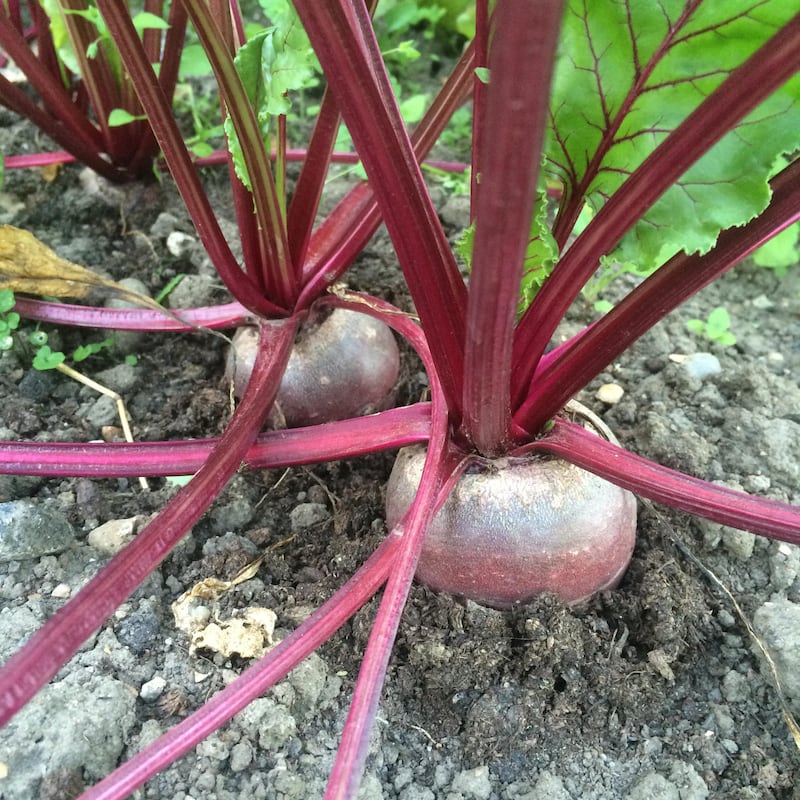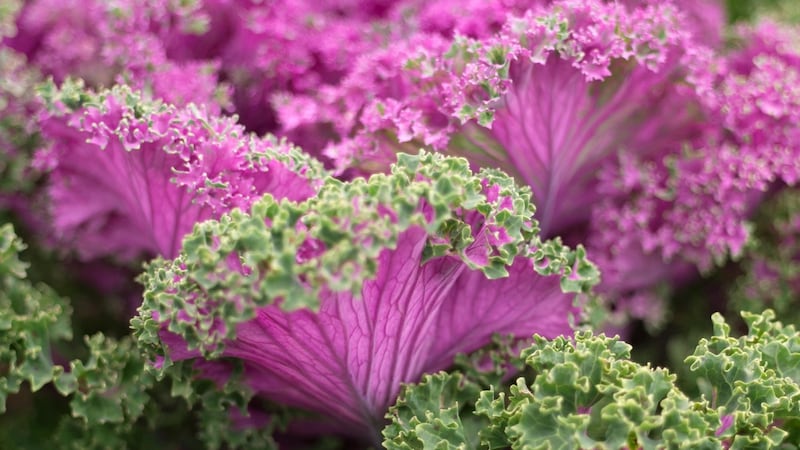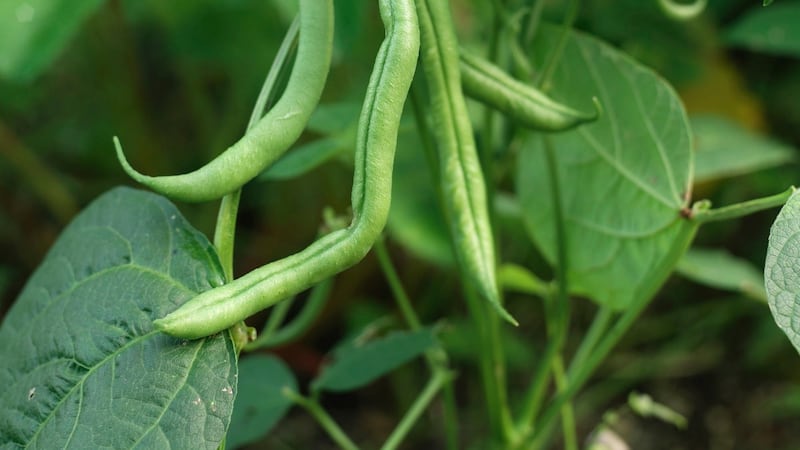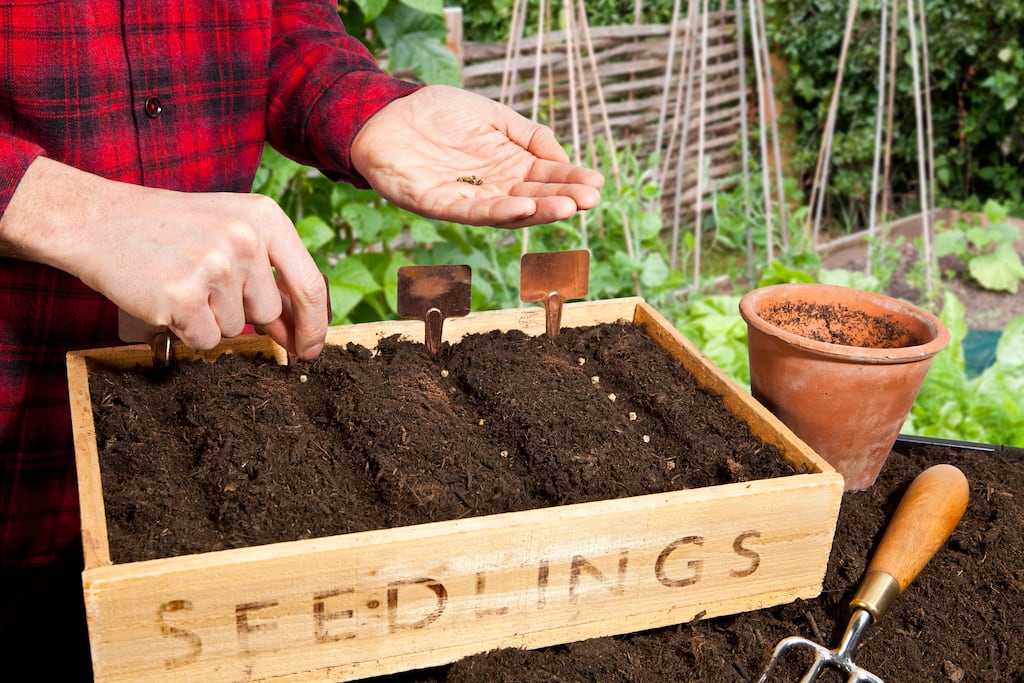It seems strange, I know, to talk of growing winter crops for the polytunnel or glasshouse, smack-bang in the middle of a very sultry Irish summer. But the simple truth is that the secret to making the best, and most productive use, of these valuable covered growing spaces throughout the year has always been to plan and propagate very far ahead.
Sow seed throughout July and August, for example, while temperatures, light and growth levels are still high, and you’ll have plenty of baby vegetable transplants to grow under cover throughout the cool months of autumn, winter and early spring. In this way you can guarantee a steady supply of fresh, nutritious, home-grown produce long after the rest of the garden goes into hibernation.
Many kinds of leafy vegetables and herbs do brilliantly when grown this way and treated as cut-and-come-again crops, producing plenty of tender, juicy, flavoursome leaves over a long period of time. Examples include hardy winter varieties of lettuce, spinach, kale, chard, American landcress, lamb’s lettuce (also known as corn salad), chicory, rocket, winter purslane (also known as claytonia), texsel greens, oriental mustards, mibuna, mizuna, tatsoi, pak choi, choy sum, komatsuna, coriander, dill, sorrel, chervil and parsley.
July to early August is also an excellent time to sow seed of Florence fennel, beetroot, baby turnips, dwarf French beans, radish, kohl rabi, salad onions, sprouting broccoli and spring cabbage for growing under cover in the same way throughout the autumn, winter and early spring months of next year.
With covered growing space at such a premium during these busy growing months and temperatures at their hottest, these crops are generally best sown in the evening into pots, trays or modules and then placed on a garden table outdoors to protect them from slug and snail attack. Make sure to choose a warm, sheltered spot outdoors that’s bright but not in direct sun, and far away from any rank or weedy overgrowth. This is especially important when it comes to heat-sensitive species such as lettuce and spinach, which will germinate poorly or be inclined to bolt if seed is sown in the very high temperatures typically found inside polytunnels in high summer.
Klassmann’s peat-free organic seed compost stands head and shoulders above any other brand that I’ve used in terms of its overall quality and fine particle size
For reliable results, it’s also vital to use fresh, quality seed sourced from a reputable supplier. Most good garden centres still carry a decent selection at this time of year but you’ll find the widest choice online from great Irish suppliers such as mrmiddleton.com; seedaholic.ie; greenvegetableseeds.com; quickcrop.ie; giy.ie; theorganiccentre.ie and from the organic seed producer brownenvelopeseed.ie.
A good-quality seed compost is another must and makes a vast difference to germination rates as well as to the health and vigour of the resulting seedlings. Although it’s pricier and inexplicably difficult to find in most Irish garden centres, Klassmann’s peat-free organic seed compost stands head and shoulders above any other brand that I’ve used in terms of its overall quality and fine particle size (see quickcrop.ie and fruithillfarm.com).
Whichever brand you use, always make sure to dampen the compost before sowing, and to sow lightly and to the correct depth, gently pressing the seeds down on to the compost to ensure they make good contact with it. Really small seeds are generally best surface-sown or almost surface-sown, using the lightest layer of compost of vermiculite to cover them. To help to keep the upper layer of compost damp and friable (both are essential for good germination), I also always like to work some fine vermiculite into the top 5cm layer before sowing.
Whichever kind of tray, pot or container you plump for, just make sure to give it a quick wash before use in order to minimise the risk of disease
Bear in mind that root vegetables such as beetroot, turnips, radish, and bulbous species such as Florence fennel and kohl rabi typically dislike root disturbance, even as tiny, newborn seedlings. So to give these a really good start, I like to sow the seed singly into deep root trainers (available from mrmiddleton.com; quickctrop.ie; or nursery trays (available from fruithillfarm.com), which gives their root systems plenty of space. To further encourage good germination rates, I then cover these with a sheet of clear glass until I spot the first signs of baby seedlings pushing their way through the surface of the compost.
In comparison, leafy species of vegetables are typically more shallow-rooting and much more forgiving of root disturbance. For these, I typically sow the fresh seed into two-litre pots of damp seed compost, then cover them with an upturned clear freezer bag secured with an elastic band to lock in moisture and humidity until germination occurs. Once they’ve produced their first set of true leaves (leaves typical of the mature plants), they can then be pricked out into modular trays and grown on to a decent transplant size while I’m waiting for permanent growing space to be freed up in the tunnel.
Again, whichever kind of tray, pot or container you plump for, just make sure to give it a quick wash before use in order to minimise the risk of disease. For the same reason, do your best to practise crop rotation at planting time.
Last but not least, bear in mind that staggering sowings by succession-sowing small batches of seed at fortnightly intervals through July-August is a very useful way of further spreading out the harvesting period and avoiding gluts.
Ten vegetables to sow seed of this month for growing in the autumn-winter polytunnel

Turnip ‘Milan Purple Top’ and Turnip ‘Tokyo Cross’
Both have edible leaves and are tastiest when harvested for use as baby turnips.

Kale ‘Ragged Jack’
A lovely, leafy member of the cabbage family grown for its very pretty, nutritious pink-and-green baby leaves, which can be eaten in a salad or stir-fry.
Swiss Chard ‘Bright Lights’
A great alternative to spinach, this leafy, nutritious. versatile colourful vegetable is a stalwart of the winter polytunnel.
Beetroot ‘Boltardy’ or ‘Boro’
Two ultra-reliable bolt-resistant varieties suitable for cropping in late winter-spring from a July sowing.

French beans
Sow asap and look for the dwarf variety known as ‘Faraday’ for a late autumn crop.
Radish ‘Red Meat’
Also sometimes sold as ‘Watermelon’, this variety produces large, round, scarlet-fleshed radishes that are delicious eaten raw, pickled, fermented or used in a winter salad or stir-fry.
Kohl rabi ‘Azur Star’or ‘Kolibri’
Two pretty, flavoursome, purple-skinned varieties of this bulbous member of the brassica family. Both bulb and leaves are edible and can be used raw or cooked.
Florence fennel ‘Rondo’
An excellent, high yielding bolt-resistant variety of this heat-loving versatile vegetable.
Lettuce: ‘All the Year Round’
A classic butterhead variety with crisp flavoursome leaves.
Mixed oriental salad leaves
Widely available as a mix of varieties including mibuna, mizuna, mustard, pak choi, komatsuma, and Chinese cabbage, this is a great cut-and-come-again crop for polytunnel growing
This week in the garden
Wisteria should be pruned for the second time this year (this fast-growing ornamental climbing plant should also be pruned every January-February), both to keep it floriferous and to prevent it from outgrowing its allotted space. To do this, use a sharp, clean secateurs to cut the new, slim, whippy growth back to five-six leaves, or typically 15cm/6 inches. If the main stems of the plant have reached as far as you want them to grow, nip out their growing tips also.
Summer containers can start to look a little tired at this time of year unless regularly maintained. To help keep them looking their best, deadhead the plants thoroughly, nip off any dead or damaged foliage, remove and replace any dead plants, and start giving them a generous liquid feed every fortnight.
Dates for your diary
Saturday, July 1st & Sunday, July 2nd (11am-5pm): Galway Castle Garden Festival, Claregalway Castle, Co Galway, with a range of talks by guest speaker, plant sales by many of the country’s leading nurseries, exhibitions of botanical art, music, craft and entertainment, admission €10 (children free). galwaygardenfestival.com
Sunday, July 9th (10am-5pm): Fruitlawn Garden, Abbeyleix, Co Laois, the annual Open Day of plantsman and designer Arthur Shackleton’s garden and artist Carol Booth’s studio, with rare plants and artwork for sale. arthurshackleton.com, carolbooth.ie











